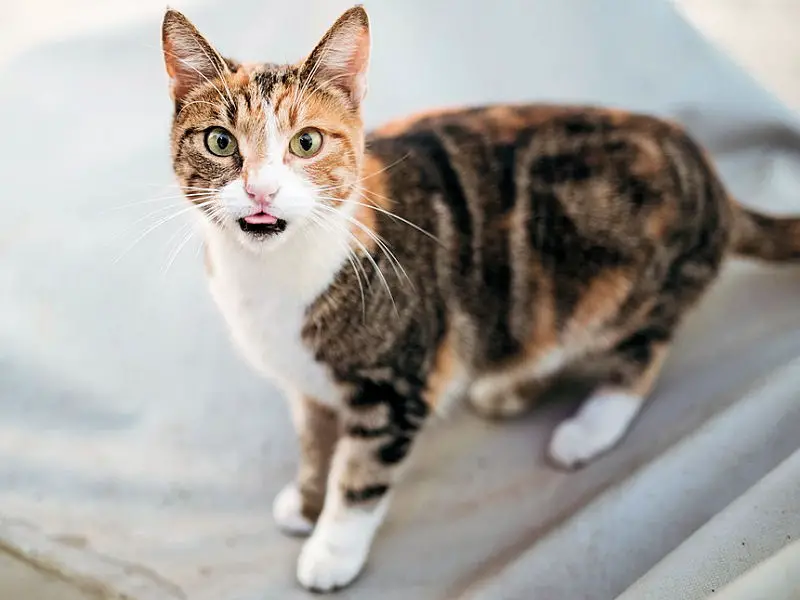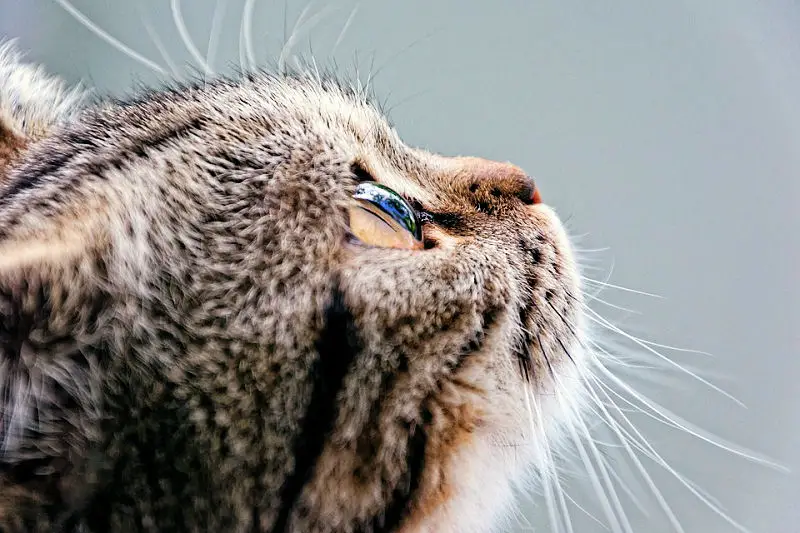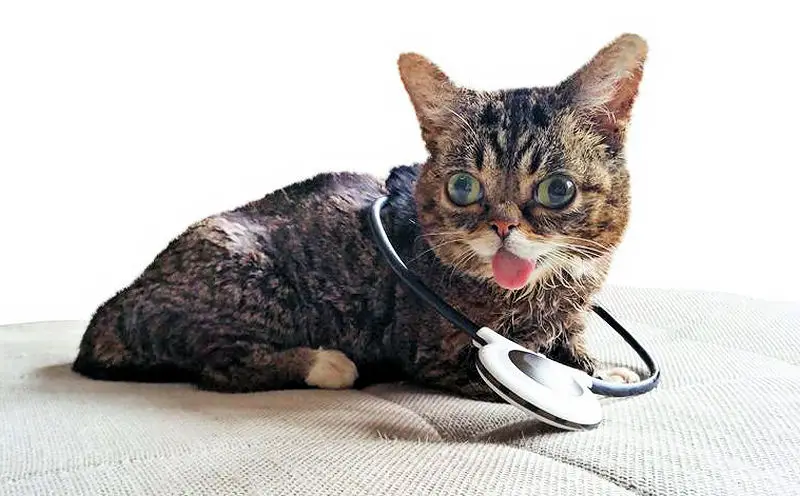
Like us, you no doubt appreciate the wonder, magic and majesty of our feline companions. One of their unique characteristics is their mastery at hiding pain and discomfort. Cats won’t complain or draw attention to the problem like a human will. As a result, cats can suffer from an ailment for a long time before we notice something is wrong.
Hiding pain and discomfort caused by injury or disease is a natural cat behavior. It’s part of their instinct stemming from the “jungle cat” mentality, where exhibiting any weakness in the wild would make them natural prey to other animals. In a wild cat colony a weak cat loses its status and power which means it will have to survive on less food, and likely give up the best hunting grounds and drinking places. The weaker cat will be chased away from the safest sleeping spots while stronger cats in the colony pose a threat to its very survival. This is one of the main reasons why cats hide any perceived weakness.

Another reason cats hide pain has to do with their feeding pattern. Cats have to eat every day. Wild cats have to hunt every day. Even when they are sick or in pain they still have to hunt to ensure their survival. Since our house cats are descendants of wild cats, they instinctively exhibit this same behavior. It is often very difficult to determine pain in cats because they are so skilled at hiding it!
We regularly hear from our readers their concern about whether their cat might be in discomfort or pain and are unsure what to look for. Here’s hoping today’s post will shed some light on this concern and offer some insights and solutions.

It is an astute cat owner that notices early symptoms such as not jumping on counters, not joining in the “fun” and indeed even going off their food. While it is the cat owner’s desire to help immediately – and answer the question “what can I give my cat for pain?” – the remedy is not always easy.
Cats have very few options for safely controlling pain, and certainly at no time should human medications be shared with them, without the expressed approval of a veterinarian. A cat’s makeup is very delicate and implication to liver and kidneys are always a risk.
When a pet owner notices signs of pain in their animal, the first call needs to be to the veterinarian to discuss symptoms and potential treatment. Signs of pain can be related to much more than old age, or joint disease, and only a complete exam can help determine the cause and avoid missing potentially serious underlying issues.

NSAIDs are usually the first choice for assisting in pain management for felines, but regrettably there are no long-term drugs that are FDA approved, making it difficult to provide relief. Certain NSAIDS are cleared for short-term use in cats, such as the pill Robenacoxib/Onsior, or the oral liquid drug Meloxicam. Opioids are often prescribed by the vet for severe discomfort, and most usually given post-surgery, or for chronic conditions like arthritis or cancer, but as with all meds feline, a watchful eye is required.
Pet owners often ask if they can give their cats Aspirin. The answer is “only if your vet agrees.” Cats do not have the liver enzymes to break down aspirin, and while it might provide short-term relief (¼ of a baby tablet given every 72 hours), the unintended side effects can be serious.

Many of the veterinarians we liaise with frequently prescribe the Assisi Loop for the control of pain and inflammation in cats. The Assisi Loop uses tPEMF (targeted Pulsed Electro-Magnetic Field) technology to stimulate the body’s natural healing response with low levels of electromagnetic energy to relieve pain without the threat of side effects.
The Assisi Loop is an FDA cleared Non-Pharmaceutical Anti-inflammatory Device (NPAID®). An NPAID is a class of medical devices that employs a form of electromagnetic therapy for animals, treating a variety of orthopedic, neurologic or degenerative issues, post-surgical pain and swelling, inflammation, and open wounds.
[clickToTweet tweet=”Think Your Cat Might be in Pain or Discomfort? Check out the Assisi Loop” quote=”Think Your Cat Might be in Pain or Discomfort? Check out the Assisi Loop”]
The Assisi Loop (2 sizes shown in photo below) is placed over an area to be treated for a 15-minute interval. Positive results may be seen in as little as one or two sessions, while chronic cases can require up to two weeks for noticeable improvement.

Pain, swelling and inflammation are reduced by enhancing the therapeutic production properties of nitric oxide in tendons, ligaments, bones, inflamed skin, and internal organs. Cats may feel a slight pleasantly warm sensation due to increased blood circulation, and often enjoy being held during therapy as many quickly make a connection between treatment and relief.

The Assisi Loop is available for at-home use either dispensed through your veterinarian or animal physical rehabilitation practitioner as part of a continued treatment plan, or online directly from Assisi Animal Health with a veterinary prescription.
Many of you will recognize Lil BUB (photo below) of Instagram fame: @iamlilbub. Lil Bub was the runt of her litter born to a feral mother and has an extreme form of Feline Dwarfism that causes her limbs to be quite small in comparison to the rest of her body. She also inherited a rare condition called osteopetrosis that causes her bones to become overly brittle, dense and prone to pain and breakage. Here she is proudly wearing her Loop. 😺

Lil Bub’s cat dad (Mike Bridavsky) found that her condition gradually caused her to lose mobility and eventually she was hardly able to walk. As luck would have it, a fan came forward and told Mike about the Assisi Loop. He began using the Loop and was shocked by the improvement in her, going from practically immobile to playing, running, jumping, and climbing stairs with ease.
Check out the video below and listen to Mike Bridavsky discuss his success with Lil BUB and hear two other cat owners share their remarkable experiences using The Loop:
We were certainly impressed with the testimonials and wanted to share these inspiring stories with our readers. To learn more about the technology behind how the Loop works please see: Assisi’s targeted pulsed electromagnetic field technology.
Summary
Know your Cat’s Normal Behavior. When cats fall ill or when they experience pain they will show subtle or sometimes drastic changes in behavior. They can even adopt completely new behavior.
Often cat owners don’t notice something is wrong until the cat’s behavior changes so drastically that it becomes disruptive. For example, the cat suddenly acts aggressively or starts doing its business outside the litter box. Even then, some owners think their cat is just acting out – behaving badly. More often than not, however, they don’t associate the cat’s behavior with discomfort.

Behavioral changes associated with different types of disease or pain can differ in cats individually. Likewise, not all cats suffering from a certain condition will show the same behavioral changes. We need to distinguish between changes in normal behavior and completely new or abnormal behavior.
In cats, special attention to unusual behavior, vocalization, body position and gait can provide clues to pain. It is particularly important not to dismiss older pets’ issues simply as natural consequences of aging. And of course, visit your vet! >^..^<
Learn more about Assisi here:
Finally we wanted to mention that the Loop is not just for cats but helps relieve pain and inflammation in all species (dogs, horses, etc.).
Please share with us any experience you may have had in detecting whether your cat was in discomfort and how you (hopefully) resolved it. Just pop a comment in our “Leave a Reply” box below.



